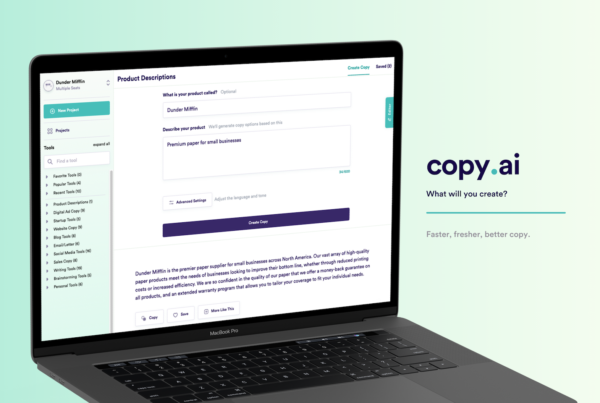How to Use Chat GPT 4 for Free: A Comprehensive Guide
Are you looking for a powerful AI language model that can help you automate your conversations, generate high-quality content, and improve customer service? Look no further than Chat GPT 4, the latest iteration of OpenAI’s language model that is changing the game of natural language processing (NLP). In this article, we will guide you through the process of using Chat GPT 4 for free, and how you can leverage its capabilities to enhance your communication and productivity.
What is Chat GPT 4? Chat GPT 4 is a state-of-the-art language model developed by OpenAI, one of the world’s leading research organizations in artificial intelligence (AI). It uses deep learning algorithms to process and understand natural language, and can generate human-like responses to a wide range of prompts, from simple questions to complex dialogues. Chat GPT 4 is trained on a massive dataset of text, including books, articles, and websites, and is capable of learning from its interactions with users.
How to Use Chat GPT 4 for Free The good news is that you can now access Chat GPT 4 for free, thanks to OpenAI’s new API that allows developers and businesses to integrate Chat GPT 4 into their applications and services. Here’s how you can get started:
- Sign up for OpenAI’s API: To access Chat GPT 4, you need to sign up for OpenAI’s API, which provides a range of language-related services, including Chat GPT 4. You can sign up for free on their website, and then request access to the API.
- Choose a plan: OpenAI offers several plans for their API, ranging from free to enterprise-level. The free plan allows you to access Chat GPT 4 with some limitations, such as a lower response rate and a maximum sequence length of 2048 tokens. However, it should be enough for most use cases.
- Set up your environment: Once you have access to the API, you need to set up your environment to start using Chat GPT 4. You can use any programming language that supports HTTP requests, such as Python, JavaScript, or Ruby. OpenAI provides comprehensive documentation and code samples to help you get started.
- Send a prompt: To generate a response from Chat GPT 4, you need to send a prompt, which is a piece of text that describes the context and the desired outcome of the conversation. For example, you can ask Chat GPT 4 to write a blog post, answer a customer’s question, or complete a sentence. Chat GPT 4 will then generate a response based on the prompt and its own internal model.
- Evaluate the response: Once you receive a response from Chat GPT 4, you need to evaluate its quality and relevance to your needs. You can use metrics such as coherence, fluency, and accuracy to assess the response, and then refine your prompt or adjust your settings accordingly.
Tips and Best Practices for Using Chat GPT 4
Here are some tips and best practices for using Chat GPT 4 effectively:
- Define your goals: Before using Chat GPT 4, you need to define your goals and objectives clearly. What do you want to achieve with Chat GPT 4? What kind of conversations or content do you want to generate? Having a clear vision will help you create better prompts and evaluate the quality of the responses.
- Start with simple prompts: When using Chat GPT 4, it’s best to start with simple prompts and gradually increase their complexity. This will help you understand how Chat GPT 4 works and how to optimize your prompts for better results. As you gain more experience, you can experiment with more advanced prompts and features.
- Provide context: To generate accurate and relevant responses, Chat GPT 4 needs context. Make sure to provide enough information about the topic, the audience, and the desired outcome of the conversation. This will help Chat GPT 4 understand your intentions and generate more accurate responses.
- Refine your prompts: One of the key advantages of Chat GPT 4 is its ability to learn from its interactions with users. By refining your prompts based on the feedback you receive, you can train Chat GPT 4 to generate better responses over time. You can also use metrics such as coherence, fluency, and accuracy to evaluate the quality of the responses.
- Use natural language: Chat GPT 4 is designed to process and understand natural language, so it’s important to use it in your prompts. Avoid using technical jargon or overly formal language, and instead, use conversational language that feels natural and engaging. This will help Chat GPT 4 generate more human-like responses.
- Provide feedback: When using Chat GPT 4, it’s important to provide feedback on the quality of the responses. This will help Chat GPT 4 learn from its mistakes and improve its performance over time. You can also use feedback to refine your prompts and optimize your interactions with Chat GPT 4.
- Experiment with different settings: Chat GPT 4 offers a range of settings that you can adjust to optimize its performance. For example, you can adjust the temperature parameter to control the randomness of the responses, or the top-p parameter to control the diversity of the responses. Experimenting with these settings can help you find the optimal configuration for your use case.
- Use external resources: Chat GPT 4 can generate responses based on its internal model, but it can also benefit from external resources such as knowledge graphs, dictionaries, or data sets. By incorporating external resources into your prompts, you can improve the accuracy and relevance of the responses. Make sure to cite the sources of the external resources in your prompts and evaluate their impact on the quality of the responses.
Discover the Power of Chat GPT with OpenAI’s Resources
- Hugging Face: huggingface.co – Hugging Face is an AI company that provides state-of-the-art natural language processing tools, including Chat GPT 4. They offer a free API that allows developers to use Chat GPT 4 for free.
- OpenAI: openai.com – OpenAI is a research company that created Chat GPT 4. They offer a range of AI tools and models for natural language processing, including GPT-3 and GPT-4. Their website provides detailed documentation and tutorials for using Chat GPT 4.
- GitHub: github.com – GitHub is a web-based platform that allows developers to collaborate on software development projects. Many open-source projects on GitHub use Chat GPT 4, and you can find code samples and tutorials to help you get started.
- Kaggle: www.kaggle.com – Kaggle is a platform for data science and machine learning competitions. They offer a range of datasets and challenges that you can use to train and evaluate Chat GPT 4. You can also find tutorials and code samples on their website.
- Medium: medium.com – Medium is a popular blogging platform that hosts articles on a wide range of topics, including artificial intelligence and natural language processing. You can find many articles and tutorials on using Chat GPT 4 on Medium, as well as tips and best practices for optimizing its performance.








